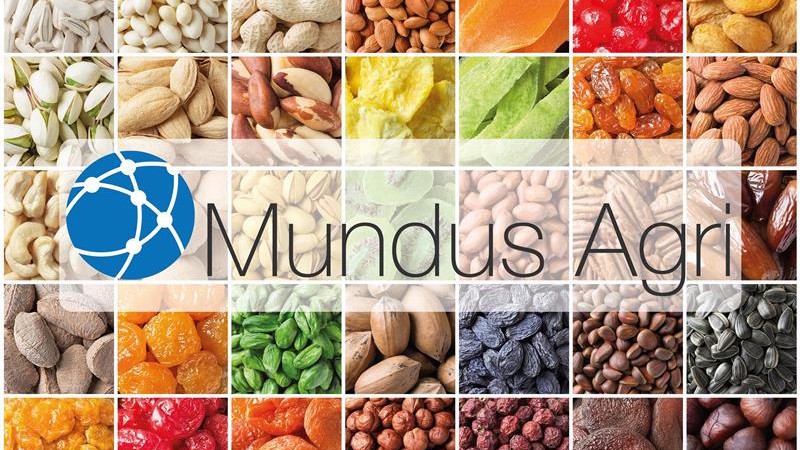Sesame Seeds: Chinese Market Demands Analysis & Future Outlook
September 18, 2017 at 6:53 AM ,
Rainbow Exports

General Situation of Chinese Sesame Market
The imported sesame price generally was range-bound in 2017. In mid-February and early August, the sesame price increased to almost 10,000 RMB/T(about 1508 USD/T), but couldn't really reach this number in this two times. At present, affected by the high sesame price in overseas countries and the upcoming new sesame from around the globe, the imported sesame price generally is volatile.
According to our investigation, the sesame planting areas in Hunan Province and Hubei province have dropped by 40% and 30 % respectively compared to last year. In henan province, the sesame planting areas have increased by 10% due to the government policies guidance in some areas. In Anhui and Jiangxi areas, the sesame planting areas remain almost the same as last year. Overall, the sesame planting areas in 2017 have reduced by 25% compared to last year.
Here are the reasons why the sesame planting areas have decreased:
Firstly, the domestic sesame price has remained at a low level for a long time, while the income of planting soybean and cotton is higher. Besides, it is easier to plant this two crops than sesame. Since the farmer’s earnings of planting sesame have decreased. More farmers choose to plant soybean and cotton Secondly, most of the sesame planting areas in china are hilly land and most of the labours are elderly people living alone. Because most of the young people work in the city, the farmlands are abandoned
At present, few new early sesame seeds from Hunan and Hubei producing areas have come into the market and the opening price is about 10400 RMB/T(about 1569USD/T), which is higher than that in last have led to floods in hunan Province, Hubei Province, Anhui Province and Jiangxi Province, etc., but generally have limited influence on sesame crops. In later stage, the weather is relatively good for the growing of sesame crops. It is expected that this year, the sesame yields per mu will be sharply increased, the overall sesame quality will be improved co,pared to last year, and the overall production of chinese sesame seeds will probably remain almost the same as last year.
The Sesame Crops in Zhumadian City of Henan Province Grow Well : (Picture-1)
The Sesame Crops in Hilly Lands of Yueyang City in Hunan Province (Picture-2)
Chinese Sesame Market Demands Analysis
Chinese Sesame Import & Export Quantity Analysis
From January to July, 2017 China imported 459160.37 tons of sesame seeds in total, decreased by 25.06% compared to that in January to July, 2016,
From January to July, 2017, China exported 15617.35 tons of sesame seeds in total, up by 10.82% compared to that in January to July, 2016.
(Figure- 1), (Figure: 2), (Figure- 3) & (Figure -4)
Monthly Statistics of China’s Sesame Import at Port : (Table: 1)
2009-2017 Chinese Sesame Market Supply-Demand Balance Sheet : (Table: 2)
Sesame Stocks at Qingdao Port, China: We did a survey on sesame warehouses in Qingdao, Including China Merchants, Juhuida, Shunshi New warehouse, Xinrunferng, Qianxun, Julida, keda warehouse, Xinlande, Hong Shengjun warehouse and Bomei. Etc. The total volume of sesame stocks at Qingdao Port is about 90,000 tons, down by 30.77% than the same period last year, within the normal level.
Sesame Stocks at Tianjin Port, China : We did a survey on sesame warehouses in Tianjin, including Tianma warehouse, Shengchan Ziliao warehouse, Jinyue warehouse, Yugang warehouse, Junliangcheng warehouse, Ningchegu warehouse, Grains and Oil Refinery Center warehouse, Konggang warehouse Liutai warehouse, Huaxing warehouse, Jiali warehouse and Toudaogou warehouse, etc. The total volume of sesame stocks at Tianjin port is about 40,000 tons, down by 31.03% than the same period last year, within the normal level.
The Market Demands for Sesame seeds in china
As the largest sesame consumption market and the biggest sesame buyer in the world, china’s sesame imports rose from 190,000 tons in 2007 to 930,000 tons in 2016, increased by 4.8 times in 10 years. Over 80% of china’s market consumption demands for sesame seeds is about 1,100,000 tons.
The Consumption Structure of China Sesame Market
According to our investigation, in the consumption of sesame seeds in China, about 65% are for oil expression, about 20% are for sesame washing hulling, about 5% are for sesame sauce, about 3% are for baked sesame, and about 7% are for unhulled edible sesame seeds. With the improvement of living standards in China, the consumption of sesame sauce showed a trend of increase and the growing rate is about 8%. Hulled sesame seeds: due to the environmental reasons, the consumption of washing hulled sesame seeds decreased year by year, especially in Beijing, Tianjin and Hebei regions. Because the dry-hulled sesame is conform to the requirements of environmental protection, its consumption was increased year by year.
The Ethiopia & Sudan sesame seeds obtain a high oil yield with wonderful flavour, and the quality of their oil is very similar to the domestic sesame oil, making them become the prefered sesame for oil expression. In the circulations such as wholesale market of agricultural products, the consumption of Togo, Mali and Tanzania white sesame seeds and their color sorting products is larger, making them become the substitution of Ethiopia & Sudan white sesame.
Chinese Sesame Market Future Outlook
By 23th August, 2017, the total sesame trading volume at ECX has hit 247066.4 MT, down by 29.77% from 351797.3 MT in the same period last year. Currently the sesame arrivals at the ports in China mainly come from Ethiopia, Sudan and East Africa. The sesame price will be mainly affected by the volume of arrivals and the selling quantity in the market later.
2005-2017 Ethiopia White Sesame CNF Price in China : (Figure- 5)
2006-2017 China Sesame & Ethiopia Sesame Price Comparison Chart (Figure- 6)
Since May this year, the RMB against the US dollar exchange rate has been rising. Whether te CNH & CNY. Or the yuan’s central parity against the US dollar, currently has risen to a new high of about 6.6 over the past year with the cumulative appreciation of over 4%. The appreciation of RMB means less import costs, which in beneficial to the importing of sesame seeds
The appreciation of RMB resulted in the reduction of import costs. Besides, since July 1, 2017, China has declined the sesame import value-added tax to 11% from 13% it is clear that this year, china’s sesame import costs have reducing, so chinese importers can get higher profits than last year.
At present, Chinese downstream consumption enterprises are waiting for the new sesame and are taking a wait-and-see attitude. The traders at ports believe that there will not be so many new arrivals later, and the coming of two Chinese festivals(Mid-Autumn Festival on October 4th & National Day on October 1st, 2017) will be good for the sesame market, so they are not willing to reduce the selling price, leading to a deadlock in the imported sesame market. It is expected that the recent market price will probably be fluctuated.
Recently the sesame price in overseas countries is fluctuated and gets higher and the purchasing price from other countries is a little bit higher than the selling price in China, which supports Chinese sesame market. At present the sesame stocks at the ports of China are lower than that in the same period last year. The high inventories(the most terrible situation) have smaller influence on restricting the sesame price rise, but the sesame arrivals from East Africa is increasing. With the coming of the two Chinese festivals(Mid-Autumn Festival & National Day), the demands will increase and the downstream enterprises will purchase more goods. It is expected that there will be more goods being sold from the ports in early September. More attention must be paid to the later arrivals and demands.





